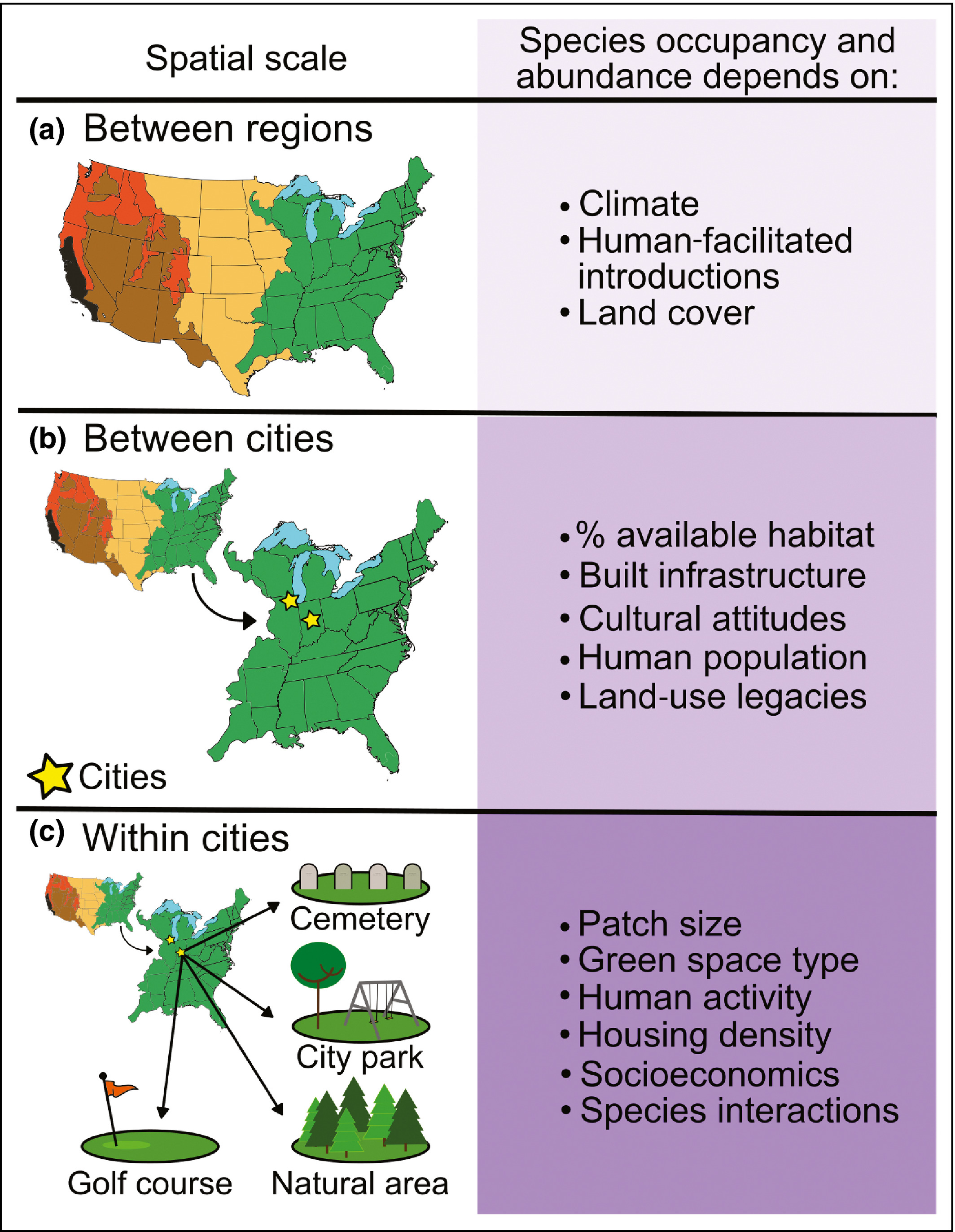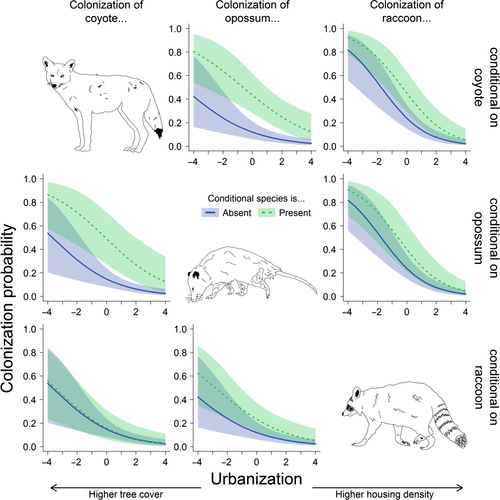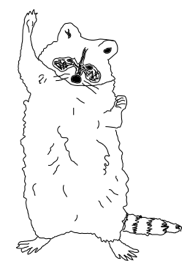Why do various kinds and numbers of species live in different environments?
It's a simple question that usually has a complex answer. This is because
there are many processes that determine where species live, and who they live
with. These processes arise from interactions between one or more axes of
environmental heterogeneity, evolutionary trade-offs among organisms, and the
density of different resources species may need in a given locality. It is my
goal to better understand these processes to better conserve wildlife.
Overall, my research can be categorized into two broad areas.
Urban ecology

In the last decade humanity has transitioned from primarily living in rural to urban areas, and in response urbanization rates have increased worldwide. And even though it is clear that urbanization profoundly alters the distribution and abundance of wildlife, there is still much to discover to better sustain biodiversity on an urbanizing planet.
Through my research I seek to better understand how urban wildlife communities respond to urbanization. I am especially interested in determining how urban wildlife communities differ at varying hierarchical scales (e.g., both within and between cities). By doing so, we can improve our understanding of how urban wildlife populations and communities form and persist as well as how they interact with humans. This should, in turn, allow us to inform urban planning to make cities work better for humans and wildlife.
PNAS. (PDF)
Nature Ecology & Evolution. (PDF)
Ecological Applications. (PDF)
Zoonoses and Public Health. (PDF)
Ecosphere. (PDF)
Frontiers in Ecology and the Environment. (PDF)
Journal of Animal Ecology. (PDF)
Conservation Biology. (PDF)
Biodiversity and Conservation. (PDF)
Frontiers in Ecology and Evolution. (PDF)
Ecology and Conservation of Birds in Urban Environments. (PDF)
The American Midland Naturalist. (PDF)
Quantitative ecology

The models that ecologists develop, be they graphical, mathematical, or statistical are abstractions of the truth and function as a means to extract useful information from data. Maps, for instance, are a model of the geographic features of a region, and good maps are useful. Ecologists are mapmakers of the natural world, and it is our job to simplify and approximate what we can so that we may better conserve and understand the species around us. Our ability to do this is, in part, conditional on the methodological tools at our disposal. I have a keen interest in developing techniques to get the most ecologically relevant information as possible from observational data, especially when data is collected imperfectly. By doing so, we can better answer both applied and basic questions in ecology.
Journal of Animal Ecology. (PDF)
Journal of Animal Ecology. (PDF)
Ecological Applications. (PDF)
American Naturalist. (PDF)
Journal of Animal Ecology. (PDF)
Wildlife Society Bulletin. (PDF)
Frontiers in Ecology and Evolution. (PDF)
Methods in Ecology and Evolution. (PDF)
Human Dimensions of Wildlife. (PDF)
Ecosphere. (PDF)
